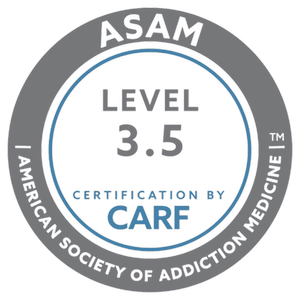What to Expect During Opioid Detox
The epidemic of opioid use in the United States has reached critical levels, with a national emergency being declared and opioid-related deaths topping 130 per day.
Addiction prevention strategies, effective treatment for substance dependency and access to overdose reversal medication is the only way to overcome this.
For an addict, the idea of entering treatment is terrifying, a colossal leap into the unknown. The fear of uncertainty is enough to stop many people who desperately need help from getting what they need, so what can you expect during an Opioid Detox?
Back to Basics: What are Opioids?
To conquer your enemy you must know it completely. To know how to guide someone through the process of withdrawal and out to the other side you must know exactly what they are feeling, thinking, and hoping for.
The foundation of this is understanding opioids themselves. They are all chemically related and interact with receptors on nerve cells in the body and brain. They completely rewire the neural pathways associated with risk, reward, pleasure, and pain. Along with relief from pain, they provide feelings of euphoria and wellness. And it’s these secondary effects that lead to abuse. Heroin, fentanyl, morphine, oxycodone, codeine, and hydrocodone all form part of this potentially lethal family.
What is Detox?
Detox is considered to be the fundamental first step in fighting addiction and consists of the complete elimination of the chosen substance (or all imbalance-inducing substances) from the detox patient’s body on a physical level.
On a psychological level, it also involves removing the action of self-medicating from the addict’s daily routine and teaching them coping skills to prevent them from relapsing. To ensure complete honesty and rigorous compliance with the detox program, the vast majority of addicts will have to undergo such a program in a licensed facility under strict supervision.
In the case of opioids, an addict can begin to show their first signs of withdrawal just six hours from their last use.
Timeline of Withdrawal
The symptoms of opioid withdrawal are physical, emotional, and psychological. The duration of these symptoms is contingent on the addict’s underlying physical and mental health at the time of admission, which type of opioid they've been addicted to if they are a polydrug user, and the total duration of their addiction. Generally speaking, the longer the addiction the longer the withdrawal, and in the majority of cases, the peak physical symptoms manifest around five days into their detox period and begin to slowly fade after two weeks.
The physical symptoms are considered to be the easiest to treat. It is the emotional and psychological addiction that is the hardest to overcome, and for some, the cravings will never stop. In order for them to forge a new path of sobriety, they will need long-term support and resources in order to prevent relapse.
Physical Withdrawal Breakdown
As mentioned above, in the early moments of withdrawal the addict will be utterly consumed by the physical sensations they are experiencing as the drug leaves their system. They may feel like they are losing their minds as they go through days of insomnia, diarrhea, sweating, muscle spasms, nausea, and seizures. As awful as this experience can be there is no other way to recover and two weeks of discomfort are absolutely worth the gift of a lifetime of recovery.
Emotional Impact
The emotional impact of detox can last for months after withdrawal. To return to a healthy baseline after years of drug abuse is no quick or easy feat.
They can include dysphoria, depression, extreme anxiety, highly disturbed sleep patterns, and intense feelings of cravings. It is the period of intense cravings that are the most dangerous to a newly clean addict as the extreme distress may make them feel like a relapse is their only option.
How can a rehabilitation facility help?
Depending on the person and the severity of their addiction, quitting cold turkey without support can lead to a high risk of relapse and even lower self-esteem. Putting your faith in the hands of those that know exactly what you are going through will set you up for success. Users are in a safe, drug-free, and supportive environment where they can learn about who they are again without outside triggers and enabling people.
They can receive opioid replacement drugs to manage their recovery and most importantly get access to mental health treatment. By treating the mind as much as the body they create a new framework of thinking, feeling, and living to create a new, beautiful drug-free life.
Do you know someone struggling with opioid addiction? If so, please know that help is always available and that we can give you the support and insights to help them embark on a new adventure, free from chaos and misery. Let us help you help them. Get in touch with us to discuss their situation with certified professionals and get you one step closer to getting your loved one back.
Get The Latest Updates In Drug & Alcohol Recovery News To Your Inbox
If you opt into our newsletter, we promise to respect your privacy. We don’t share your information with any other parties.
Sign up to get info about the science behind addiction, the latest trends in addiction treatment, inspirational recovery stories, and much more.



